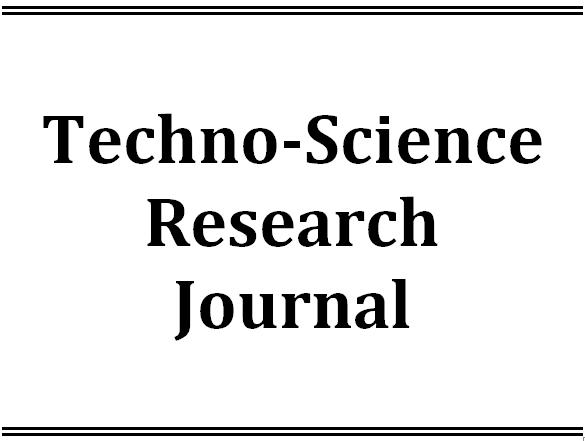Latest Issue
Empowering Education with Online Khmer Handwritten Text Recognition for Teaching and Learning Assistance
Published: August 30,2025Undergraduate Student Dropout Prediction with Class Balancing Techniques
Published: August 30,2025Status of Seawater Quality at Koh Rong Island, Sihanoukville, Cambodia
Published: August 30,2025Low-Complexity Detection of Primary Synchronization Signal for 5G New Radio Terrestrial Cellular System
Published: August 30,2025Word Spotting on Khmer Printed Documents
Published: August 30,2025Tuning Hyperparameters Learning Rate and Gamma in Gym Environment Inverted Pendulum
Published: August 30,2025Examining Passenger Loyalty in Phnom Penh Public Bus System: A Structural Equation Modelling Approach
Published: August 30,2025Prediction on Load model for future load profile of Electric Vehicle charging demand in Phnom Penh
Published: August 30,2025Economic Study on Integrating PV-DG with Grid-Tie: Case Study in Cambodia
Published: August 30,2025Effects of Solvent and Time on Extraction of Bioactive Compounds from Cambodia Black Turmeric Using Ultrasound-Assisted Extraction
-
1. Faculty of Chemical and Food Engineering, Institute of Technology of Cambodia, Russian Federation Blvd., P.O. Box 86, Phnom Penh, Cambodia
Academic Editor:
Received: July 19,2021 / Revised: / Accepted: July 19,2021 / Available online: December 30,2021
Accelerated soil erosion caused by water is one of the most widespread problems affecting environmental quality, agricultural productivity, and food security in many countries. These issues tend to cause more severe impacts on developing countries, especially in the tropical highland areas. Therefore, this study was conducted in the Prek Thnot Basin, a sub-catchment of the Mekong Basin in Cambodia, to (1) simulate sediment yield at the outlet by using Soil and Water Assessment Tool (SWAT); and (2) identify productive sediment yield area of the catchment. The SWAT model was selected due to the availability of data and the capability to represent the reality of hydrological and water quality processes, which is the best method to determine the answer to the study objectives. In response, the SWAT provided an actual performance in each calibration and validation process of both runoff and sediment yield. The annual soil erosion in most parts of the study area range from approximately 100 to more than 1400 tons/km2/y. This study indicated that the most erosive part of this study area covers 91.78 km2, which contributed to 1.64% of the whole watershed with a sediment yield of about 2206 tons/km2. In addition, the assessments of sediment deposition and erosion using Modified Universal Soil Loss Equation (MUSLE) indicated the annual sediment load along the flow direction of the mainstream, from the upper river to the outlet of the Prek Thnot river basin, about 0.2 million tons. As a result, the middle to the upstream of the watershed is the most sensitive to produce the sediment yield.

